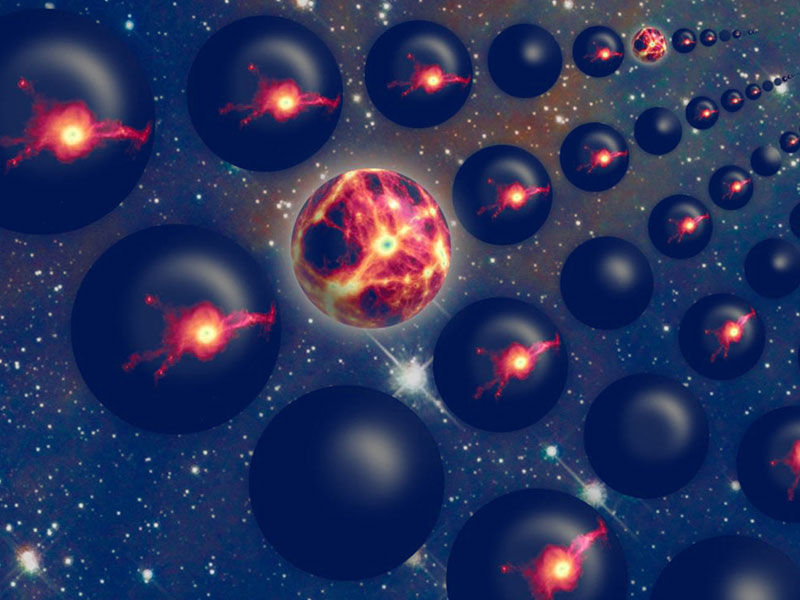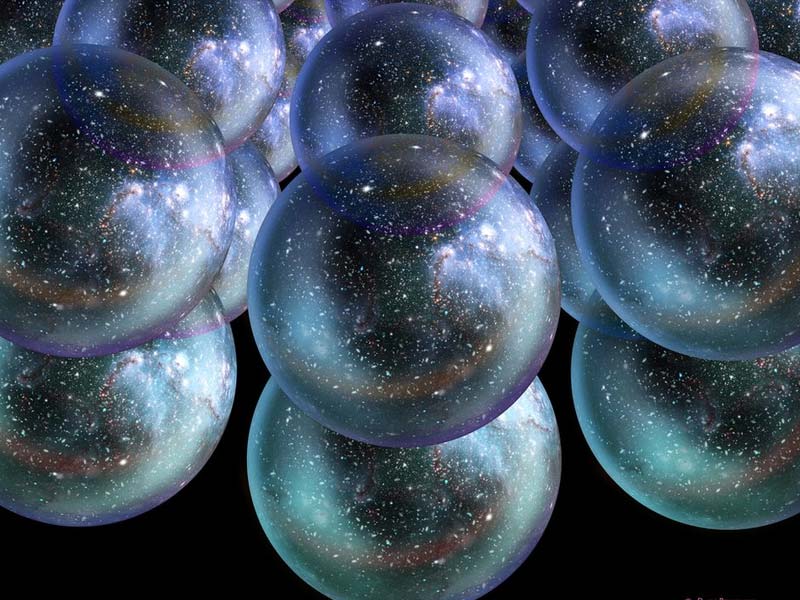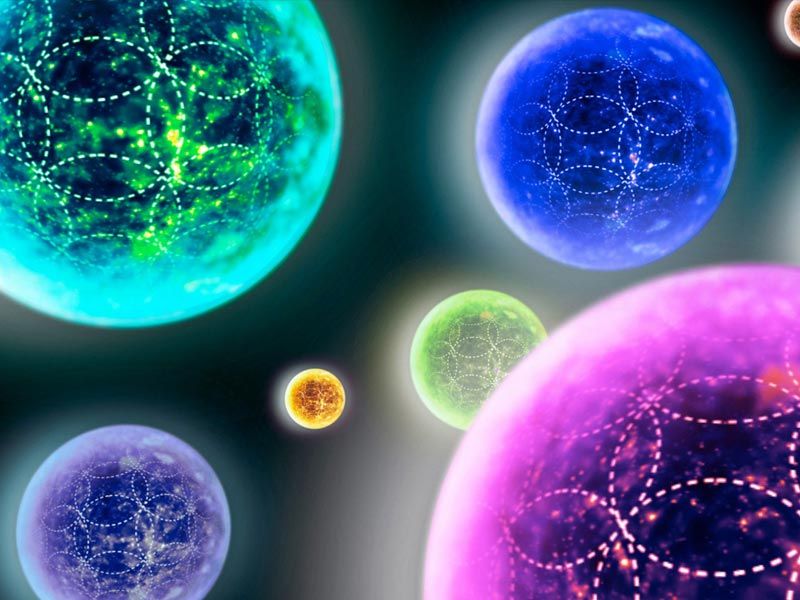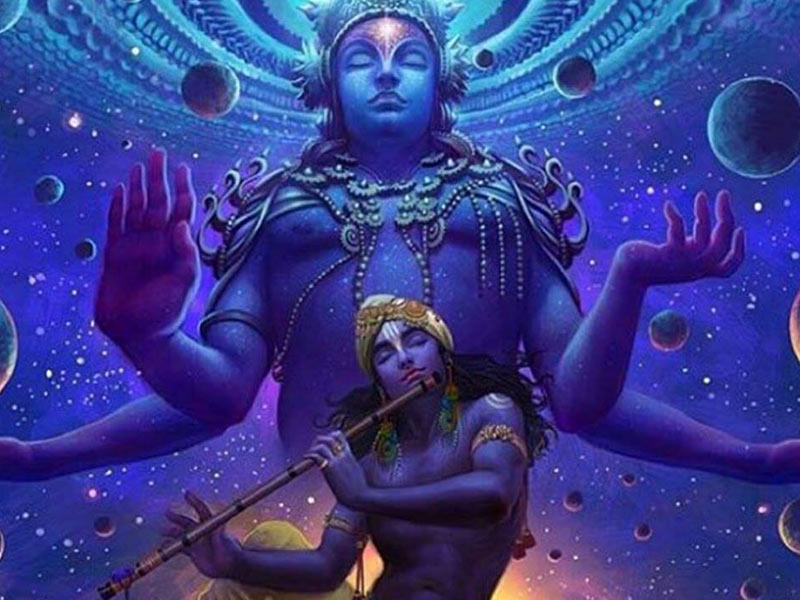The Multiverse is a highly contentious notion, yet it is a pretty basic concept at its foundation. The Multiverse asserts that, just as the Earth does not possess a specific position in the Universe, nor does the Sun, the Milky Way, or any other location, the entire visible Universe does not.
The Multiverse is the concept that our Universe, and everything inside it, is only a minuscule portion of a greater structure. This bigger entity contains our observable Universe as a small portion of a larger Universe that goes beyond our observational boundaries.
That entire structure — the unobservable Universe — might be part of a wider spacetime that includes many other, unconnected Universes, some of which may or may not be comparable to those we live in.
A multiverse is a hypothetical collection of possibly different observable worlds, each of which would have everything empirically available to a linked community of observers. The visible cosmos, as seen via telescopes, is approximately 90 billion light-years wide. However, this world would be a tiny, if not minuscule, the portion of the multiverse. The multiverse concept has numerous manifestations, especially in cosmology, quantum physics, and philosophy, and frequently claims the real physical existence of various possible configurations or histories of the known observable world.
In 1895, American philosopher William James created the word “multiverse” to refer to the perplexing moral meaning of natural events rather than to other potential worlds.
Different kinds of multiverses

The degree to which the universes suggested by the model are connected—that is, the degree to which they are part of a larger system described by a well-defined physical and mathematical framework, generally with a common ancestry and possibly even interacting with one another—is one useful way to classify multiverse models.
The claim that all conceivable universes coexist with equal actuality is at the far extreme of this range. This concept, known as modal realism, was developed in philosophy, most notably by American David Kellogg Lewis in the 1970s and 1980s. Meanwhile, it has been proposed in physics and mathematics that the known world is comparable to a formal mathematical system and that all such mathematical systems are equally real. Parallel universes or other spiritual or religious planes of existence would be similarly separated.
Some individuals believe that such other worlds are related to or interact with the visible Universe. However, how these interactions would take place is not well defined.
Processes in quantum gravity, a possible theory that would combine Einstein’s theory of general relativity and quantum mechanics, might result in somewhat more connected multiverses. One possible solution might be found in so-called cyclical cosmologies, in which the “big crunch” of a contracting universe evolves into the “big bang” of a later expanding cosmos—presumably by quantum gravity or some other exotic mechanism not represented by well-understood physics.
A similar concept is the baby universe. A quantum gravitational process creates a new region of spacetime that might branch off and potentially separate from its parent world. This would result in a “tree” of worlds that are unlikely to interact once they arise. The process is thought to take place in the interiors of black holes.
The concept of cosmic inflation underpins the most established model of a multiverse of proliferating spacetimes. Inflation is a hypothesized early universe phenomenon in which spacetime grew exponentially at a considerably higher rate than it does now.
In most theories, the expansion would have been fueled by the energy present in the vacuum, which would have produced a repulsive force. This type of exponential growth generates a region of spacetime considerably bigger than the observable world, resulting in a densely linked multiverse made up of extremely similar regions to the observable Universe.
Also Read, 10 Interesting yet Unknown Facts about the Earth
In an inflationary model, the transition to non-inflation might occur at many periods and locations. This results in the intriguing phenomenon that there are always places where the transition to ordinary expansion has not yet occurred and where inflation is still occurring in many types of inflation. This option leads to a new scenario in which inflation proceeds indefinitely and creates an arbitrarily large or infinite number of postinflationary regions, one of which may be the observable Universe.

Because the concept of inflation has an excellent theoretical explanation and observational backing, and because the process of producing new worlds through inflation is based on relatively well-understood physics, this multiverse model has acquired considerably greater popularity than earlier theories.
The inflationary multiverse is also reasonably linked in the sense that all worlds would share the same spacetime, and interactions between neighboring universes might, in theory, generate observable consequences. Many universes are growing bubbles in a shared backdrop; when bubbles clash, the resulting “bruise” may appear as a circular disturbance on the cosmic microwave background radiation.
String theory and eternal inflation have an intriguing interaction. String theory associates each point in classical four-dimensional spacetime with a compact space of six or more dimensions.
The properties of these small regions can influence physical conditions throughout the cosmos. The structure of the compact space also defines vacuum energy, which, if positive, will typically cause everlasting inflation. Furthermore, transitions between configurations are possible, resulting in numerous worlds with distinct physical constants and fields. This type of multiverse is known as an “eternal inflation/string landscape.”
Because physical constants would take many different values in many different actual universes, this framework has been proposed as a so-called anthropic explanation for why certain physical constants, most notably the cosmological constant, take a value compatible with a universe suitable for life but very different from a “natural” value. According to the everlasting inflation/string landscape concept, much of the multiverse is unoccupied. Life can only be found in regions with suitable physical constants.
A distinct but significant form of the multiverse may emerge straight from quantum physics. According to quantum mechanics, a system can be characterized by states that correspond to distinct results of physical measurement of the system by a macroscopic instrument. A system will be in a superposition of such states before it is measured.
A system like this does not allow for a definitive forecast of a measurement outcome, just probabilities.
The question of how these probabilities should be considered remains unanswered. In particular, the development of the state vector in an isolated system is predictable. Still, it seems to leap deterministically to the state matching to the observed value during measurement. Hugh Everett, an American physicist, suggested that this is a byproduct of treating the measurement device classically. Instead, he argued that an instrument interacting with a quantum system simply “enlarges” the superposition to include a superposition of macroscopic states with various experimental outputs.
As a result, all conceivable events occur, although in different universes. This type of multiverse is mathematically unified and is often referred to as the “many worlds” interpretation of quantum physics. Calculations of the decoherence across worlds, on the other hand, show that macroscopic things in distinct universes cannot interact.
Finally, various forms of multiverses can merge or cohabit. An Everett-type multiverse, for example, may comprise various worlds, each of which is a distinct endlessly inflating multiverse, or eternal inflation could, in theory, generate many cyclic multiverses or result in the birth of a newborn universe.
Theories positing other worlds

The concept of a multiverse was not pushed upon humanity by inventive sci-fi writers; it sprang from other premises, like string theory and quantum physics. Even the theory of cosmic inflation, which is central to astronomers’ present understanding of our Universe, predicts the presence of a multiverse.
A multiverse might be overflowing with words that are almost identical to ours — or it could be swarming with universes that are impossibly different. In any case, the regions of parallel universes provide a plethora of intriguing (and mind-boggling) possibilities.
Many writers have speculated throughout the years that if there are infinite other worlds, at least some of them contain doppelgängers of oneself. However, because the rules of physics aren’t always the same in every world, these other versions of you may encounter a completely different physical reality.
There are four types of parallel Multiverse…
A parallel world, according to MIT mathematician and cosmologist Max Tegmark, may come in four varieties.
- Nothing in a parallel world could be qualitatively new or different from our own.
- A parallel world might have entirely different basic physical rules.
- A parallel world might have the same fundamental rules of physics as ours. Still, it could have started with a different set of circumstances.
- A parallel world might have the same underlying physical laws as ours but different effective bylaws.
Many scientists have disregarded the multiverse concept throughout the years due to one basic fact: If you can’t leave our own world, there’s no way to show that any other universes exist. That concept, however, is not shared by everyone.
Evidence for a Multiverse

How would we demonstrate that we exist in a multiverse? If our world collided with another, it would provide some evidence — though it’s uncertain if we’d live long enough to examine it. Some theorists have proposed that colliding universes might leave cold or hot patches on the cosmic microwave background (CMB), the Big Bang’s afterglow. If this is the case, sophisticated sky surveys should be able to locate those locations.
Also Read, What is time travel?
Gravitational waves, or ripples in spacetime, may potentially give evidence to support the idea of cosmic inflation. According to the idea, gravitational waves left over from the Big Bang might cause small curls in the CMB, which some telescopes actively look for today.
Suppose researchers find such curls in the CMB. In that case, as they believed they did in 2014, it may increase support for the concept that there is another you out there, going about your everyday life in another world, proving sci-fi writers accurate once more.
Multiverse Theory as per Hindu Cosmology
According to Hindu cosmology, the cosmos is produced and destroyed cyclically. The concept that time is divided into four epochs or Yuga, which we inhabit the nal, is deeply established in Hindu literature, including the Vedas and the Puranas. It is thought that the Avatar Kalki, the final incarnation of Vishnu, would bring the end period of global events in about 432,000 years. Hindu cosmology also covers evolution, astronomy, and astrology.
Some belief the Hindu chronology to be the most similar to contemporary scientific timelines. It implies that the Big Bang is not the beginning of everything but rather the beginning of a current cycle preceded by an infinite number of universes and followed by an infinite number of universes.

Many times in Hindu Puranic literature, such as the Bhagvat Purana, the notion of the multiverse is mentioned:
“Every world is covered by seven layers – earth, water, fire, air, sky, complete energy, and false ego — each 10 times bigger than the preceding one.” There are other worlds other than this one, and despite their infinite size, they move around like atoms in You. As a result, You are known as limitless. (Bhagvat Puran 6.16.37)
After splitting the universes, the Lord’s huge universal form emerged from the causal ocean, the location of the initial purua-emergence, avatar’s and entered each of the distinct universes, yearning to lay on the created transcendental water. (Bhagvat Puran 2.10.10)
According to Puranic literature, the number of worlds appears to be infinite, immeasurable, or incalculable:
Even if I could count all the atoms in the cosmos over some time, I couldn’t count all of The luxuries that I manifest among infinite worlds. (Bhagvat Puran 11.16.39)
There are additional analogies in the Puranic literature to explain many universes:
What am I, a tiny creature the size of my own hand? I am surrounded by a potlike world made up of material nature, entire material energy, false ego, ether, air, water, and Earth. And what is Your brilliance? Unlimited universes travel through Your pores, just as dust particles pass through the holes of a screened window. (Bhagvat Puran 10.14.11)
Yoga Vashishtha is a book that has talks between Vashistha, a renowned Vedic instructor, and different Gods and Kakbhusundi. This creature exists beyond regular time and watches everything. It depicts the cyclical nature of time, with Kakabhushundi having seen Ramayan 11 times with different outcomes and Mahabharat 16 times with different outcomes. Still, after seeing Daksha Yagya twice, he did not want to see it again or saw no point in seeing it again because it ended the same way each time.

We all have seen the idea of Multiverse in Pop Culture, from Flash creating the Flashpoint to people from different piles of Earth meeting each other. A universe where Superman is a bad person, somewhere he was born in USSR. There are many references to Multiverse. The latest we all will see in Dr. Strange: Multiverse Madness makes things more frantic for every MCU fan and pop culture fan.

There have been many instances of the whole Multiverse theory used in comics widely, scaling it to be scientifically accurate with the help of superpowers.


























